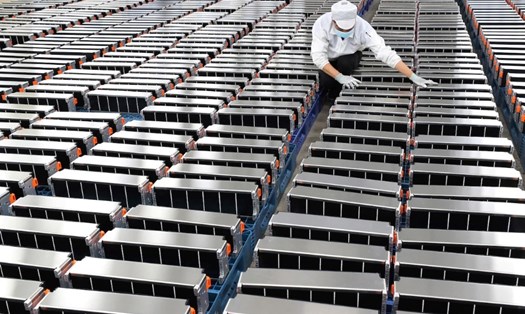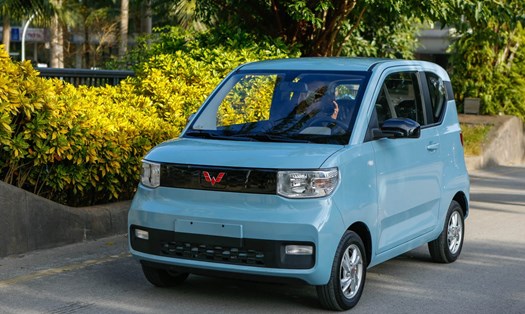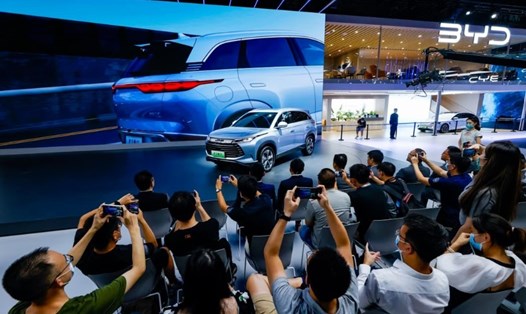The bright picture of green transportation
According to statistics from the Ministry of Construction, the country currently has more than 183,240 electric cars and 974 electric buses in operation. The two largest urban areas, Hanoi and Ho Chi Minh City, lead in quantity, with about 38,400 electric cars in each locality. For electric buses alone, Hanoi has 317 and Ho Chi Minh City has 507 in operation.
Speaking at the seminar, Deputy Minister of Construction Nguyen Van Sinh emphasized: Green transport has become an inevitable requirement in the energy transition process and to implement the international commitment to net zero emissions by 2050. This is not only a responsibility but also an opportunity for Vietnam to reshape its sustainable development model".
Ho Chi Minh City is currently the leading locality in the country in terms of the speed of converting vehicles using clean energy. According to Mr. Ngo Hai Duong, Head of the Road Transport Management Department (HCMC Department of Construction), at the seminar on October 16, the city has converted more than 14,000 technology motorbikes to electricity. In the taxi sector, the city has more than 21,300 vehicles in operation, of which 68% have switched to electric vehicles.
This is the result of coordination between the government, transportation businesses and vehicle manufacturers. A representative of the Ho Chi Minh City Department of Transport said that the city continues to strongly encourage taxi, delivery, and technology transportation businesses to convert vehicles to reduce air pollution and noise, while creating a modern and civilized urban image.
Vietnamese enterprises play a leading role
The strong development of green transportation in Vietnam is highlighted by the efforts of domestic enterprises, especially Vingroup. This group not only produces VinFast electric motorbikes and electric cars, but also operates the Vin bus network and SM Green electric taxi service, contributing to promoting the process of electrification of traffic nationwide.
According to VinFast representative, the company's charging station system is now covering all provinces and cities, creating favorable conditions for people to use electric vehicles. In addition, the flexible battery rental model helps reduce initial investment costs, thereby encouraging more people to access electric vehicles.
Not only VinFast, some other enterprises such as Dat Bike, PEGA are also expanding production, supplying electric motorbikes to serve domestic demand and aim for export. The participation of many domestic and foreign enterprises is making the Vietnamese electric vehicle market more vibrant than ever.
Experts predict that the growth rate of the Vietnamese electric vehicle market can reach more than 40%/year in the period of 2023 - 2030, if support policies are maintained stably. Three key factors are identified as charging infrastructure, tax incentives, and investment incentive mechanisms.
People benefit from the "green revolution"
Not only does it have environmental significance, green means of transport also bring practical benefits to users. Many technology car drivers in Ho Chi Minh City share that the cost of charging the battery is only a fraction of the cost of gasoline, while the car operates smoothly, has little maintenance and is favored by customers.
Mr. Nguyen Anh Tuan, an electric taxi driver in Hanoi, said: I chose electric taxis because they have many advantages and incentives, such as using free charging stations until 2027, helping to save significant costs. Even if the incentives are gone, the electricity bill is still much cheaper than the gas bill.
Many individual users are also gradually switching to electric cars thanks to low operating costs, smart technology and preferential policies for registration and inspection fees. In just the first 9 months of 2024, the number of electric vehicles sold in Vietnam doubled compared to the same period last year.
Towards a low-emission transportation system
Green transportation does not stop at vehicles, but is also associated with urban planning and sustainable infrastructure. The synchronous development of the electric bus system, electric taxis, public charging stations and priority transport routes for green vehicles will be the key to forming a low-emission urban network in the future.
Experts say that to achieve the Net Zero goal by 2050, Vietnam needs to continue to improve policies, expand charging infrastructure, and at the same time promote communication so that people clearly understand the benefits of using green vehicles.
Positive figures from the Seminar "Promoting green projects, green transportation" show that Vietnam is on the right track in the process of greening transportation. With the determination of the Government, the efforts of businesses and the response of the people, a clean, sustainable and low-emission transportation future is gradually becoming a reality.









